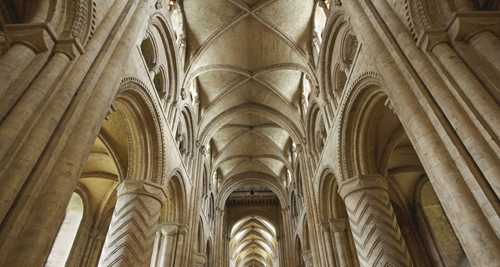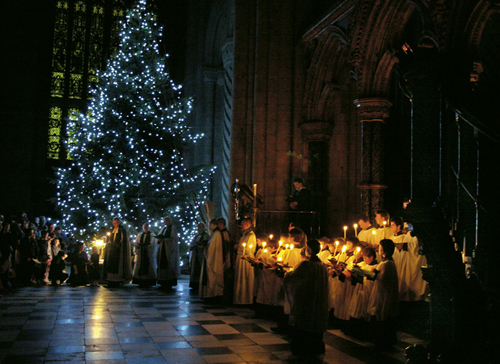Durham Cathedral is a Norman building constructed between 1093 and 1133 in the Romanesque style. It was founded as a monastic cathedral built to house the shrine of St Cuthbert, replacing an earlier church constructed in his honour.
Why is it Architecturally Important?
Durham’s architectural value lies in the fact that it is the oldest surviving building with a stone vaulted ceiling of such a large scale. This may not seem remarkable today, but developing the know-how to roof large buildings with stone rather than wood shaped the course of European architecture from then on.
Durham Cathedral is also valuable because its Norman architecture has survived largely intact – the addition of two chapels and a later central tower notwithstanding. Most other important Norman buildings in Britain were substantially modified, often beyond recognition. As such, it is recognised both as an exemplar of the Romanesque architecture, and as one of the world’s greatest cathedrals. Find out more.

The stone vault of the nave of Durham Cathedral: an architectural milestone.
© Durham Cathedral and Jarrold Printing
Durham Cathedral: A Living Church
The Cathedral has been in continuous use since its original construction 900 years ago. It remains a place of worship and pilgrimage, and is also an important visitor attraction. Over 600,000 people passed through its doors in 2009. It holds over 1700 services a year, and costs £60,000 per week (that's about £6 per minute!) to maintain.

A candle-lit carol-service around the Christmas tree.


